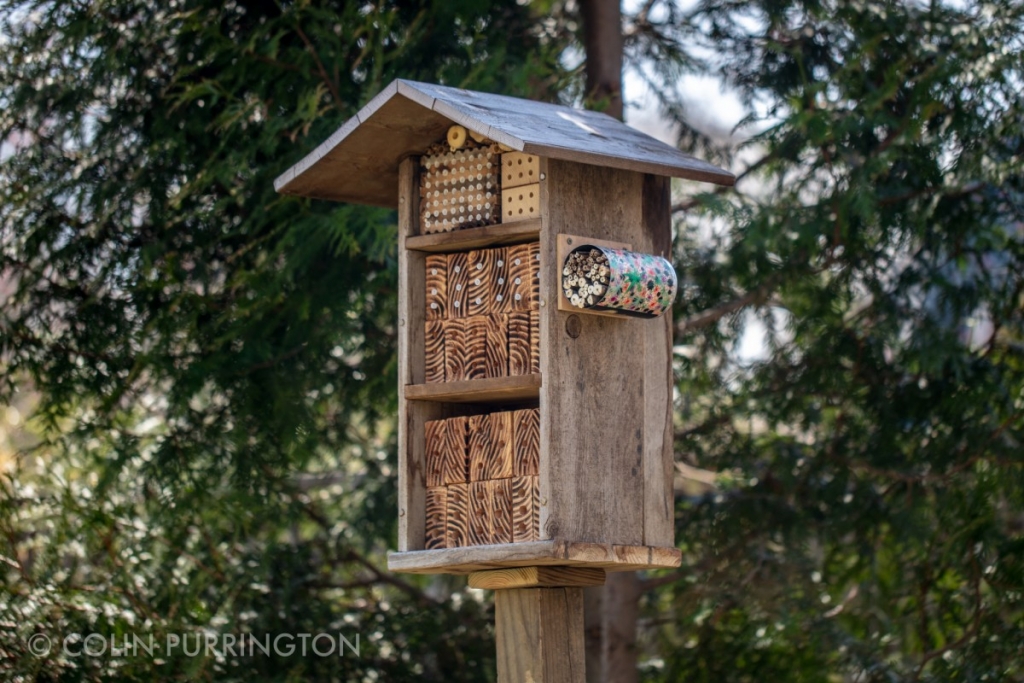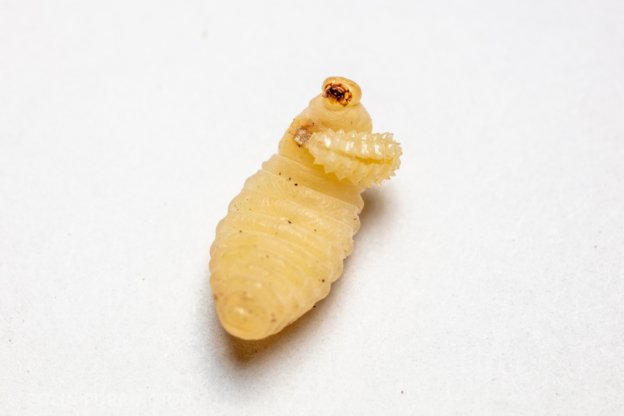Last year I had a little surprise at my bee and wasp hotel. Although I didn’t know it at the time, some of the wasp larvae I found nesting inside the tubes were harboring parasitoids. The story starts in early March, 2021, when I took my hotel apart for its annual cleaning.
Here’s a photograph of one of the wasp larvae I recovered from the hotel. Each larva was in its own cell, and I simply unwrapped the paper straw and then plopped them all into a container.
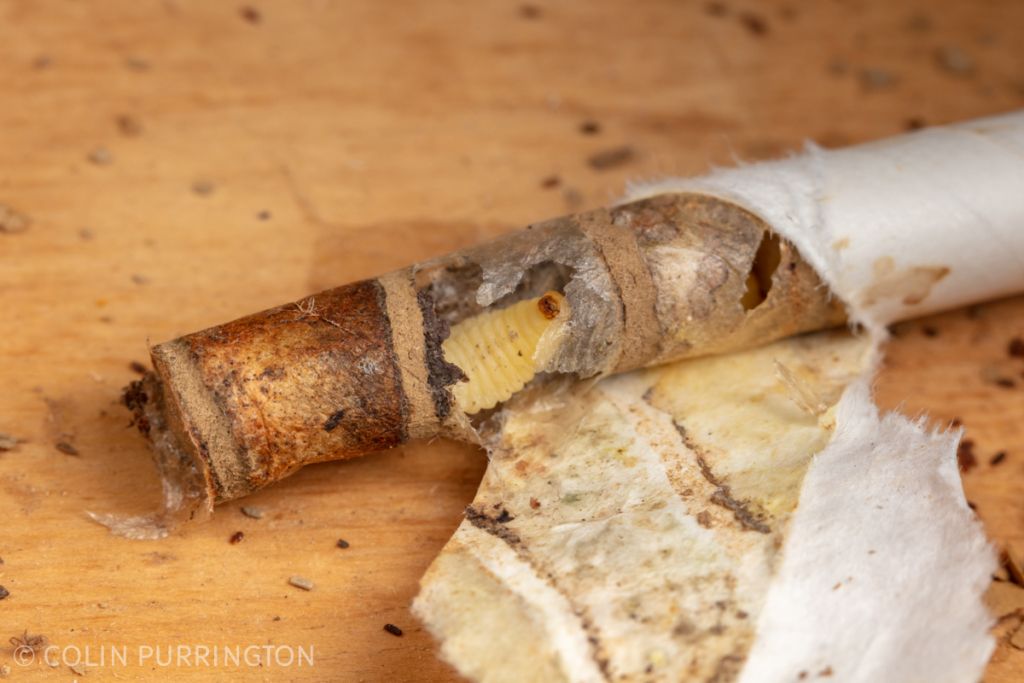
I got over two dozen of them, and kept them in my unheated garage.
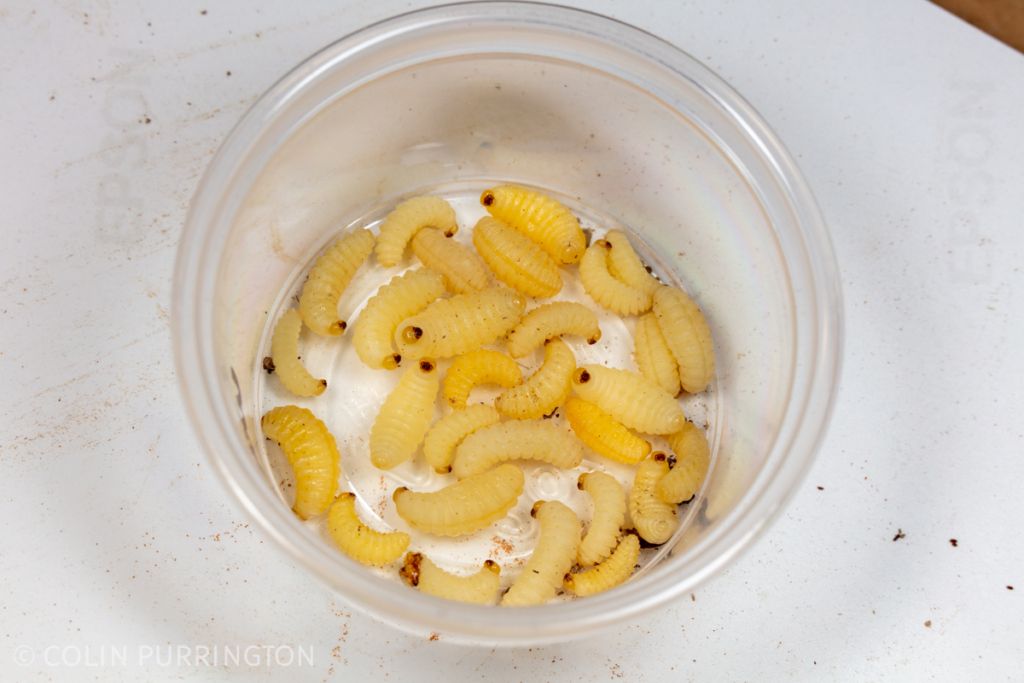
By mid-May, the wasps were starting to look like wasps. But there was variation in how far along they were, which is probably because the eggs were deposited at different times.
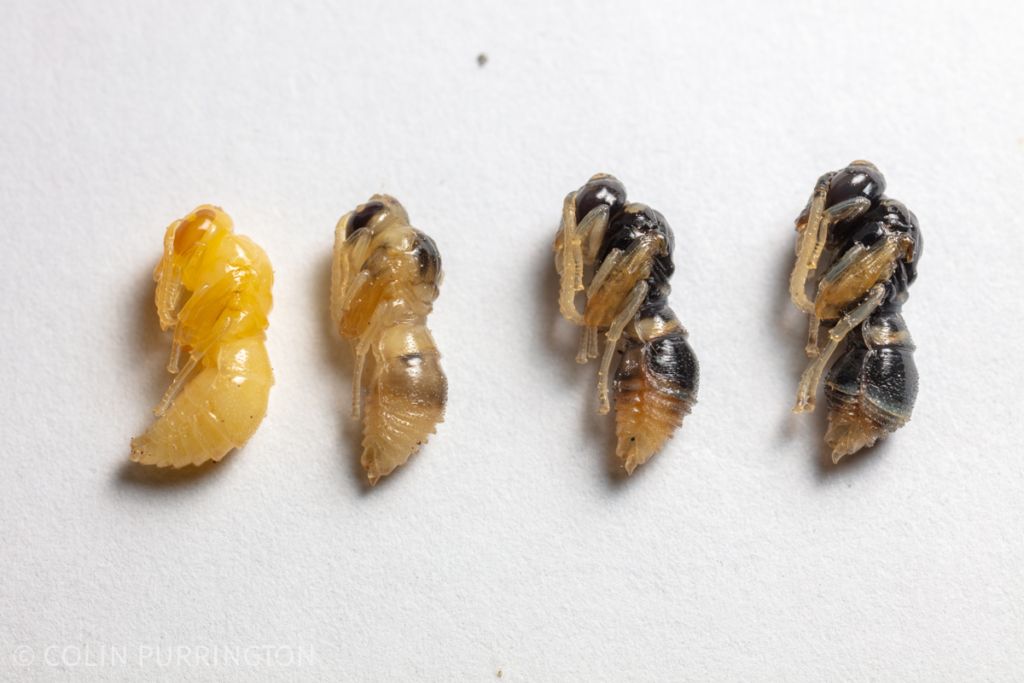
The surprise
But four of the larvae weren’t progressing onto the next stage, and when I looked closer they each had a smaller larvae attached to the ventral region near the head. Here’s one:
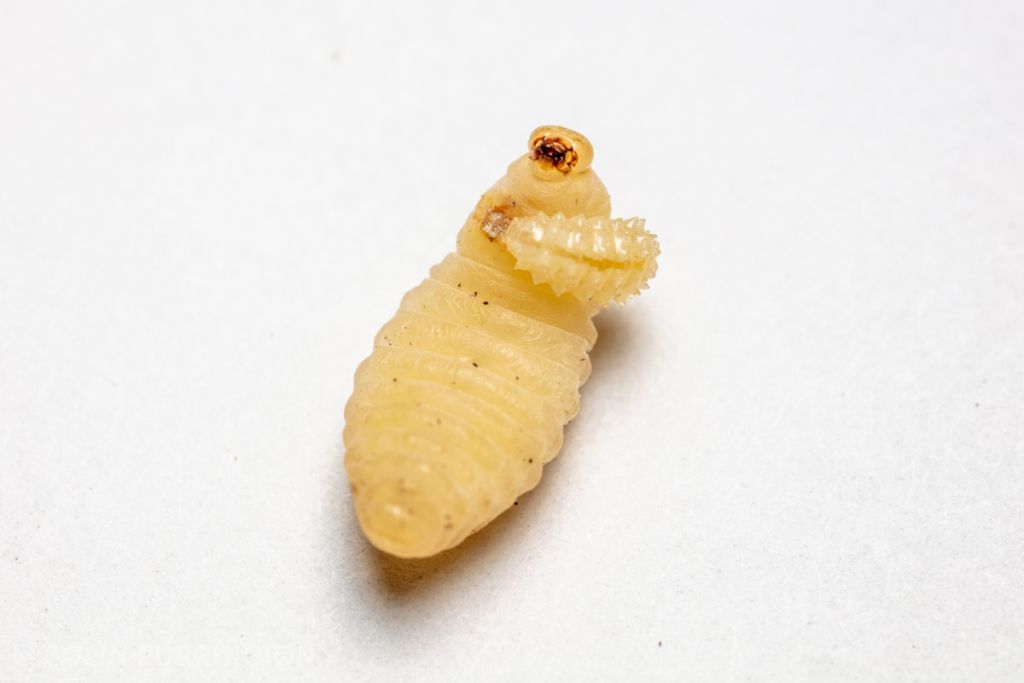
Here’s a closeup:
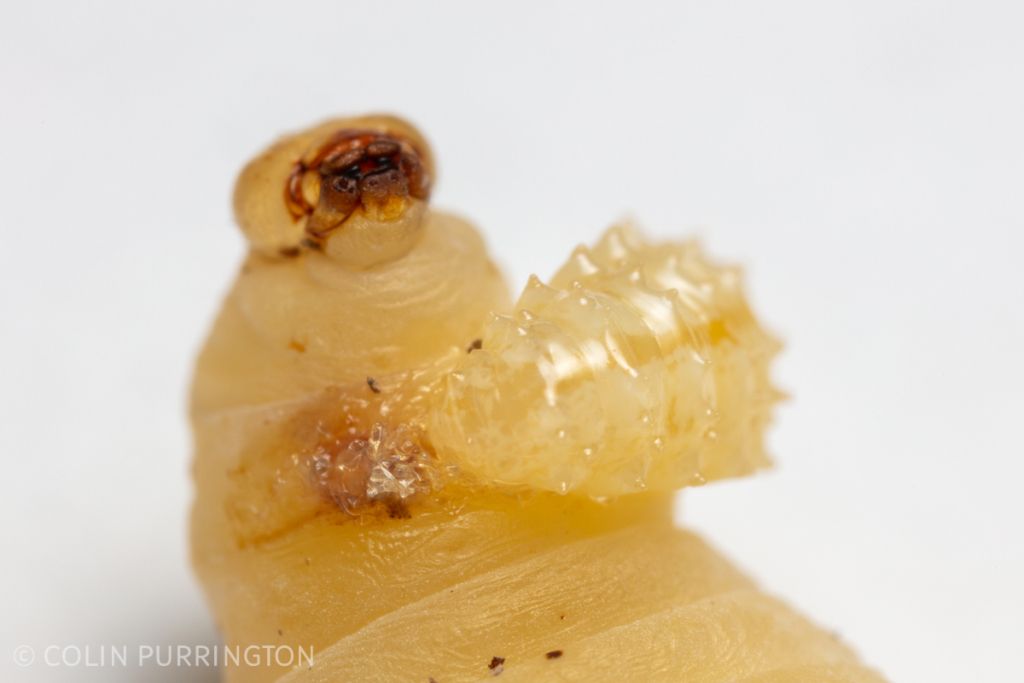
The larvae were clearly sucking fluids out of the wasps, but also retarding their development in some way, which is a nice trick. The wasps below were approximately the same age. The ones with parasitoids attached never progressed to the pupal stage, instead just becoming shriveled bags. I was traveling when most of this happened so I don’t have additional photographs of this process.
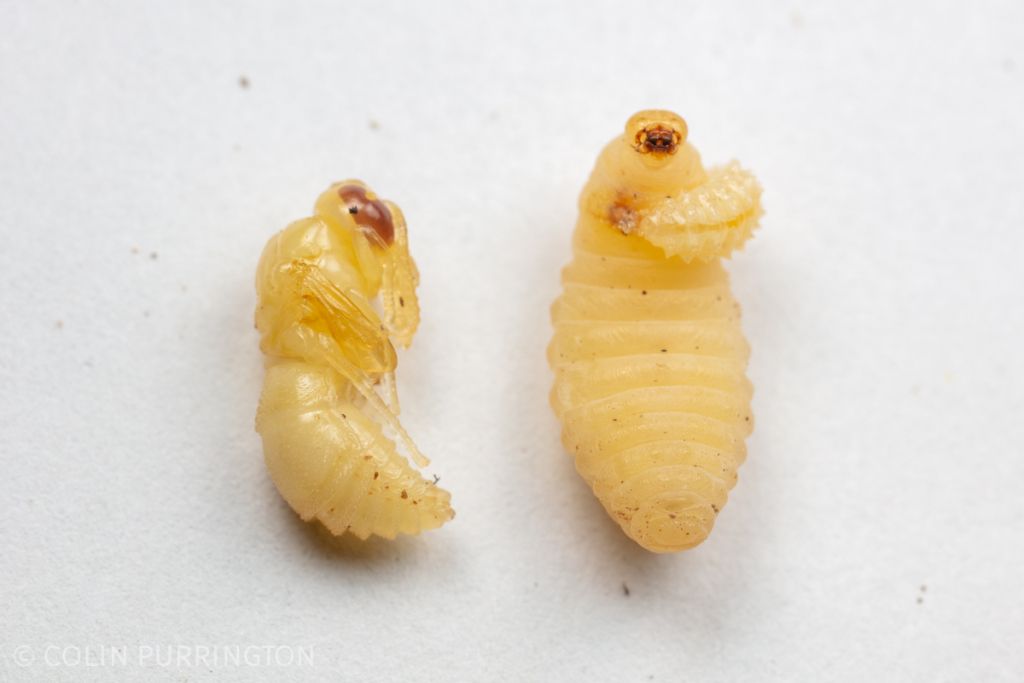
Luckily, one of the parasitoids survived to adulthood (below) and I was able to identify it as Macrosiagon cruenta, a wedge-shaped beetle.
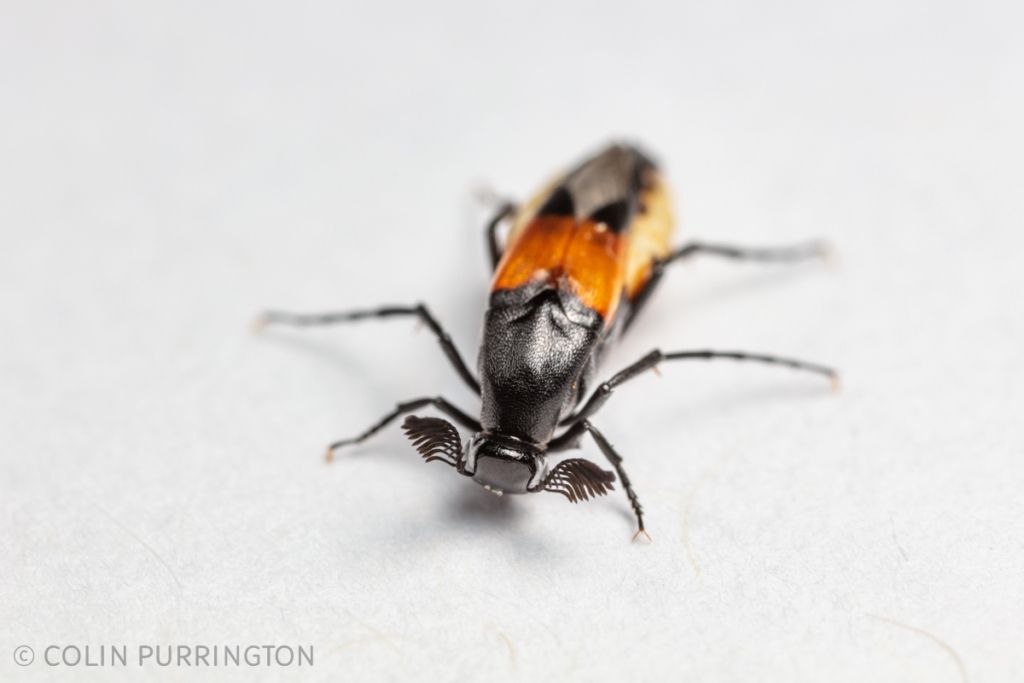
Here’s a side view. The wings didn’t develop properly, probably because the containers I had them in didn’t have the proper humidity or were kept at the wrong temperature. Or, perhaps, their development suffered from all the fussing I did during the earlier photo shoots. If you’re curious what they should look like, here are images on iNaturalist.
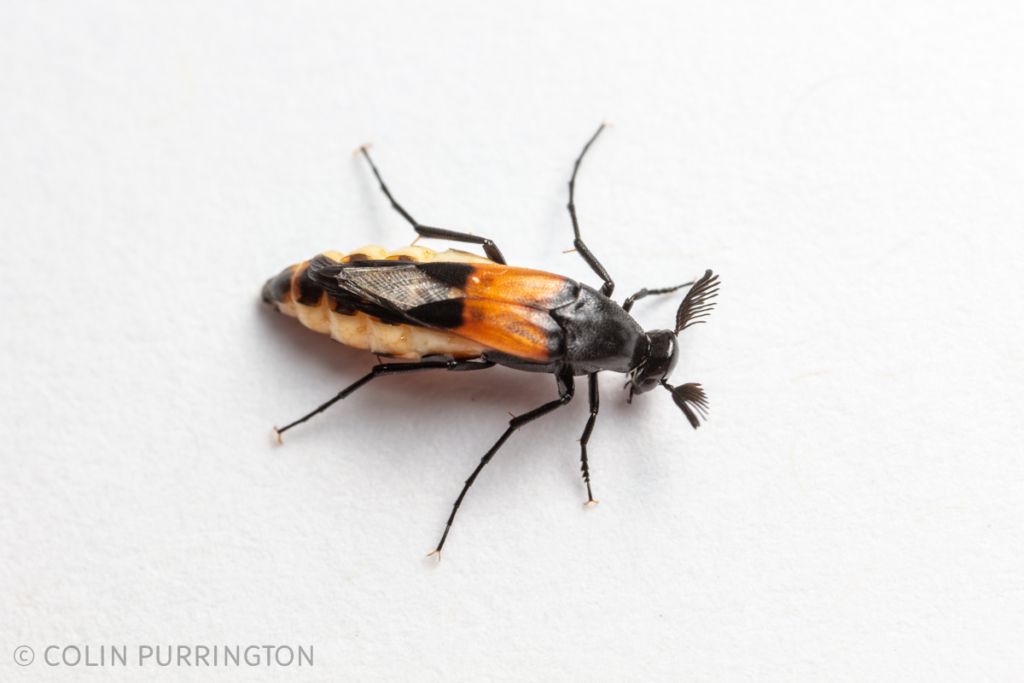
Before this, I didn’t realize there were parasitic beetles that might arrive at insect hotels. But now I’m extremely interested in finding the dispersal phase of this insect, a tiny (less than 1-mm long) mobile larva called a triungulin that lurks on flowers visited by wasps, then jumps on, secures itself, and hitches a ride back to the nest the wasp is making. Here’s a photograph (not mine) of Macrosiagon limbata triungulins lurking on a mint inflorescence:

Once inside the nest, the triungulin burrows into a developing wasp larva to feed internally for months, only later popping out to complete its development while attached externally. This is why I didn’t initially know the wasp larvae had parasites. The adults live only a few days, with females ovipositing onto plants (here’s one doing that) that are visited by wasps.
I’m not positive who the host was. In fact, it could be the case that the four larvae I found parasitized were different species. My confusion is because all of the unparasitized wasp larvae from the 2020 season turned out to be Euodynerus foraminatus. But one of the parasitized larva survived (because the I accidentally disturbed the parasite), and it was a Euodynerus hidalgo boreoorientalis. So I’m fairly confident that hosts were in the genus Euodynerus. I’m going to sort my wasps more carefully next time so that I can keep track of individual nest tubes.
In case of interest, below is a photograph of my bee and wasp hotel. And my guide to building your own.
